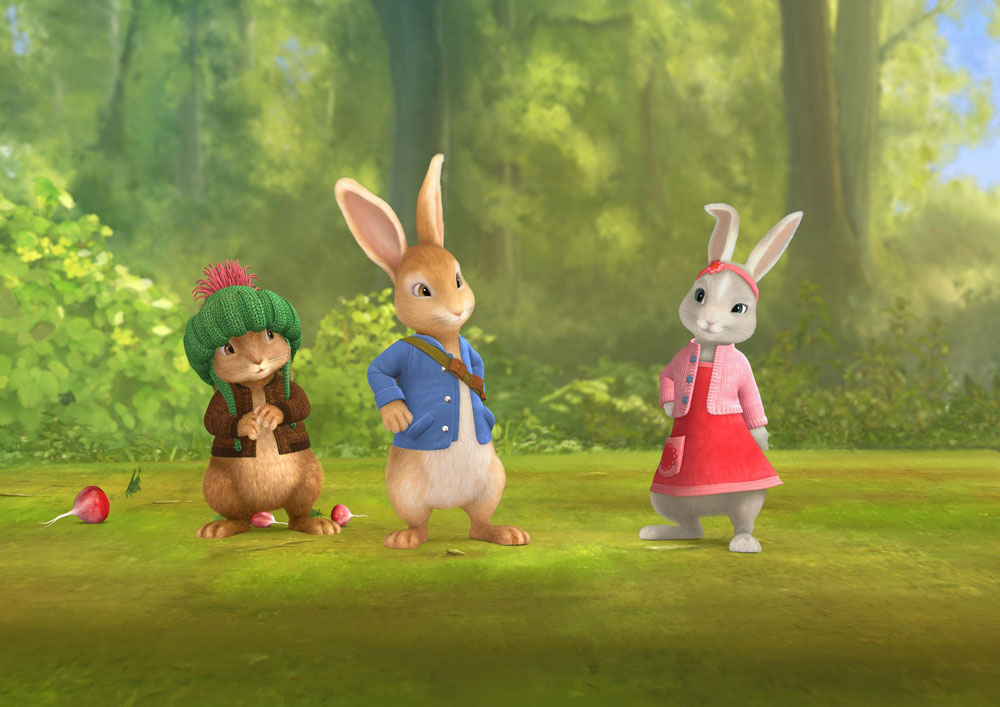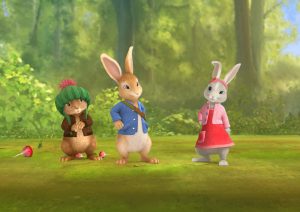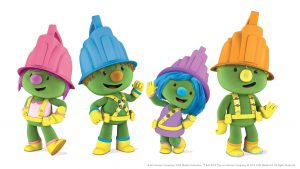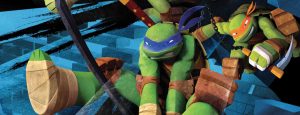
After more than 35 years of operation, TBI is closing its doors and our website will no longer be updated daily. Thank you for all of your support.
Reinventing the classics
 Children’s TV is something that binds and defines peer groups. With new versions of Thunderbirds, Noddy and various others in the works the commercial power of nostalgia is clearly intense, but when updating a classic respect and modern-day relevance are key, reports Jane Marlowe.
Children’s TV is something that binds and defines peer groups. With new versions of Thunderbirds, Noddy and various others in the works the commercial power of nostalgia is clearly intense, but when updating a classic respect and modern-day relevance are key, reports Jane Marlowe.
Turner’s Cartoon Network was built with classic properties and senior VP & COO, EMEA and MD Kids EMEA Pete Flamman says brands like Scooby Doo and Tom & Jerry are being constantly reinvented. “You have to be careful with the things you adjust,” he says. “You have to respect and nurture those original characteristics or people will turn off. If Tom & Jerry are still doing the things you’d expect and doing them in a way that’s well written and funny, then you’re still going to love it.”
Lassie and Peter Pan producer, DQ Entertainment is a specialist in this field. Rouhini Jaswal, vice president IP, DQE highlights the need for sensitivity when reworking brands with emotions attached and adds that DQE takes all the legal and creative steps necessary to preserve the brand’s integrity. “This happens right from the beginning,” she says, “with the story adaptation process, the art work, the content, brand positing in the right market, and also value creation.
 Viacom International Media Networks’ VP, international programme sales, Caroline Beaton (left) says it would be foolhardy to think these shows sell themselves, even for Turtles, which in some markets had a 90% recognition rate in 6-11 year-olds even though they’d never seen it on screen.
Viacom International Media Networks’ VP, international programme sales, Caroline Beaton (left) says it would be foolhardy to think these shows sell themselves, even for Turtles, which in some markets had a 90% recognition rate in 6-11 year-olds even though they’d never seen it on screen.
“Nickelodeon played a blinder in engaging with the super fans to test out the various parameters of its reinvention,” Beaton says. “To get them on side isn’t just a political move on our part, but they are the fan base who is most acutely aware of what will work in a modern world for something like Turtles.”
The process isn’t as simple as remastering an old favourite, as head of CBeebies production, animation and acquisitions, Alison Stewart observes. “You watch [the tapes] and realise it was made for a family audience, the script is a bit old and the words are different. You don’t just pick a show up and plonk it into the 21st century and it works. You have to keep the spirit of it, and think about the way an audience has changed.”
She cites Mr Ben as loved property that is difficult to modernise. “It wasn’t a sophisticated animation, but there was something magical about that show. People have said they’re going to reinvent it, but you’d have a duty to update the technique and yet if you take it too far away, will you reduce its charm?”
Hit Entertainment’s VP, production, Marion Edwards attributes Thomas & Friends popularity through its print, live action and CGI incarnations to “classic storytelling, the characterisation of the engines and the universal appeal of trains. That doesn’t change over the years and it doesn’t change from country to country,” she says.
Thomas special King of the Railway launched earlier this year and introduced Stephen, a new engine based on Stephenson’s Rocket while also tapping into locations and characters from the original books. As far as the show’s look is concerned, Edwards says: “CGI gives us the opportunity to add energy and pacing. By giving the engines animated faces that can lip-sync, we’re getting much better expression. We have seen the sales of Thomas expand since we’ve moved to CGI.”
Keeping kids and parents happy is key and Turner’s Flamman says Boomerang’s classics have high levels of co-viewing. “It’s a great democracy,” he says. “Are these shows performing, are they delivering audiences, are people responding to them positively? If they are we’ll keep making them.”
There are rights holders to keep happy too. Even if properties are out of copyright, they might be held by a protective estate. “We’ve always made the owners of the property very happy with what [the property] looks like on screen,” adds DQE’s Jaswal. “I wouldn’t say it’s an easy job, because it goes through a lot of development and we scratch many looks before we arrive at a look that everyone’s happy with.”
Value lies in a brand’s heritage and Winnie the Pooh’s new storytelling series Tales of Friendship goes ‘back to basics’ in a response to parents’ desire for a soothing, pre-nap show. Disney Junior EMEA’s VP, original programming and development, Beth Gardiner says: “We re-read the books and looked at the Walt Disney featurettes made in the ‘60s to become really aware of what’s come before.”
 In certain markets, however, nostalgia simply doesn’t factor at all: 41 Entertainment CEO Allen Bohbot (right) was instrumental in bringing Pac-Man to a TV audience after movie producer Avi Arad saw the iconic character’s thirtieth birthday celebrated on the Google homepage and realised the brand – which registered a recognition rate of 94% when taken to market – had never been exploited globally.
In certain markets, however, nostalgia simply doesn’t factor at all: 41 Entertainment CEO Allen Bohbot (right) was instrumental in bringing Pac-Man to a TV audience after movie producer Avi Arad saw the iconic character’s thirtieth birthday celebrated on the Google homepage and realised the brand – which registered a recognition rate of 94% when taken to market – had never been exploited globally.
After selling Pacman and the Ghostly Adventures to Russian broadcaster CTC, Bohbot asked his Moscow agent if he planned to do a lot of licensing in Russia with the 80s icon. “He said in the 80s we were a communist country, we never heard of Pacman,” recalls Bohbot. “I asked why he bought the show and he said, I just think it’s cool. I thought if this guy’s right we’ve got a double hit. It’s a good show people will like, and it’s got the acceptance of 30 years of brand history.”
Imira’s former head of distribution Christophe Goldberger is wary of referring to reinventing classics as a trend. “We are constantly asked to innovate artistically,” he comments. “Classic properties contribute to a balance; at one end there’s innovative content and at the other safe properties.”
CBeebies’ Stewart puts the number of classic properties on the market down to the fact that people who are now running companies are looking back to a rich seam of 70s/80s programming in their childhoods.
How they did it
Peter Rabbit
 One challenge in adapting Beatrix Potter for TV was remaining true to the books while ensuring some of the more violent action was suitable for its preschool audience.
One challenge in adapting Beatrix Potter for TV was remaining true to the books while ensuring some of the more violent action was suitable for its preschool audience.
Head of CBeebies production, animation and acquisitions, Alison Stewart says: “Compliance was very rigorous and there were certain shots that were just too near the mark but we were able to alter those without changing the story. We’ve left in the fox, who wants to eat Peter and Mr McGregor who doesn’t like the rabbits. We’ve taken away the really overtly scary bits.
“The colours are exactly what you’d expect if you know the Potter books. This is CGI in a very painterly palate,” she adds.
Working closely with rights holder Frederick Warne kept the producers on track. Silvergate CEO Mary Durkan adds: “They reminded us of the need to link back to [Potter’s] love of nature. We challenged ourselves to walk in her shoes – to tell clever, imaginative, often unapologetic, stories that would resonate with today’s audiences.”
The Cat in the Hat Knows A Lot About That!
 When bringing iconic Seuss character The Cat in the Hat to screen, Portfolio Entertainment series producer, Julie Stall recalls: “We couldn’t have the cat appear as a stranger who comes into the house and frightens the children as he did in the book. “What everyone loved about him was that he was spontaneous and fun and an exciting character to be around, so we made him more like a quirky, fantastic uncle rather than a stranger we’re not sure that we trust.”
When bringing iconic Seuss character The Cat in the Hat to screen, Portfolio Entertainment series producer, Julie Stall recalls: “We couldn’t have the cat appear as a stranger who comes into the house and frightens the children as he did in the book. “What everyone loved about him was that he was spontaneous and fun and an exciting character to be around, so we made him more like a quirky, fantastic uncle rather than a stranger we’re not sure that we trust.”
Developed with PBS as one of the partners, the series remains true to Dr Seuss’ desire for his stories to be educational tools. “We decided not to create fantastical ‘Seussian’ characters,” adds Stall. “Because the show had a science and nature curriculum, the new characters spring from nature, but we have animals that behave like animals.”
For this property, the aim was to capitalise on the distinctive style of the original brand. Stall concludes: “We wanted to make the series feel like it was the books come to life but in full colour.”
The Doozers
 Once supporting cast in Henson classic Fraggle Rock, The Doozers now have a show of their own. “We spent a good amount of time talking about the qualities of Fraggle Rock’s original Doozers that we wanted to continue and embellish,” explains Lisa Henson, CEO, The Jim Henson Company, who says buyers couldn’t wait for the new spin-off.
Once supporting cast in Henson classic Fraggle Rock, The Doozers now have a show of their own. “We spent a good amount of time talking about the qualities of Fraggle Rock’s original Doozers that we wanted to continue and embellish,” explains Lisa Henson, CEO, The Jim Henson Company, who says buyers couldn’t wait for the new spin-off.
“The Doozers incorporates ideas about cooperation, awareness of the environment and some of the larger themes that were in Fraggle Rock, but the entire cast of The Doozers are original personalities.”
The industriousness seen in the original characters has been extended to feed into the invention and creative problem-solving curriculum of the show. “We’ve introduced fresh devices and tools for them that will grab the attention of modern children,” adds Henson.
The look has been updated too by teaming with producer DHX Media. “The original Doozers were rod puppets and their body types were very similar,” Henson continues. “We saw an opportunity in the character design to make them in CG and introduce more variation into the way they look.”
Teenage Mutant Ninja Turtles
 The Turtles are back with original creator, Kevin Eastman, on board and a new look. Rich Magallanes, senior VP, animation, current series, Nickelodeon says: “It was important that we stayed true to the franchise, celebrating the great characters and engaging storylines that have made it what it is today, whilst re-energising it by using the latest CG animation techniques, introducing new characters, upping the humour, and even adding a more urban vibe to the show. It was imperative that the core of the show remain the same.”
The Turtles are back with original creator, Kevin Eastman, on board and a new look. Rich Magallanes, senior VP, animation, current series, Nickelodeon says: “It was important that we stayed true to the franchise, celebrating the great characters and engaging storylines that have made it what it is today, whilst re-energising it by using the latest CG animation techniques, introducing new characters, upping the humour, and even adding a more urban vibe to the show. It was imperative that the core of the show remain the same.”
Character reboots include changing April from journalist to a young Comic-Con style hipster blogger.
Viacom’s Caroline Beaton describes the new look as a CG/Anime mash-up. “The fight sequences are beautifully done in an anime style that is like nothing else out there,” she says. “It stays true to the principles of Nickelodeon because they’re stylised and fantasy based. Emoticons come up on screen so it’s got a comic book heritage.”


